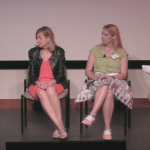The term native is fraught….
 |
| White Horse in Field by Helena Lopes (Pexels.com) |
… in many conversations these days, but everything comes from somewhere right?
The Challenge for this week circles around the question “where did horses originate?”
I’d read that horses in North America were brought here in the 15th century by Spanish conquistadors. But then I read that there were horses in North America 10,000 years ago. They went extinct, and could only repopulate the continent with a little transportation help by the Europeans. (I don’t even want to think about traveling with horses on a 15th century sailing vessel!)
In any case, this whole line of thinking brought up a deep question for me: Are horses native to North America? Or exactly where ARE they from?
This leads to our Search Challenge this week:
1. Where did horses (as a species) come from? That is, where are they native?
As I said, for our purposes, we’ll define “horse” as some version of Equus that developed roughly 5 million years ago.
I like Adam’s approach in the comment thread. He asked the relevant definitional question, “What does native really mean?”
[ definition of native ]
(Note that I didn’t do [ define native ] because I wanted more detail on what a “native species” actually means. For this post, I’m not interested in the socio-political ramifications of “native.”)
This led to the inevitable Wikipedia article, which tells us that:
In biogeography, a native species is indigenous to a given region or ecosystem if its presence in that region is the result of only local natural evolution during history. Every wild organism is known as an introduced species within the regions where it was introduced by humans.
The notion of nativity is often a blurred concept, as it is a function of both time and political boundaries. Over long periods of time, local conditions change–so a native species might have to move to survive. As a consequence, their distribution is rarely static or confined to a particular geographic location.
So, a native animal or plant is native (or indigenous) to a place if it evolved there. Of course, “there” might shift over time as continents, coastlines, mountains, and river deltas come and go. But for horses, what region did they first occupy?
The story of horse evolution is long and complex (see this Britannica.com article for details on horse evolution), but the consensus of opinion is that by the time Equus emerges as the main type of horse, it had developed very clearly in North America, having evolved from Pliohippus some 4 million to 4.5 million years ago during the Pliocene. With time, it spread southward into South America and to all parts of the Old World by crossing over on the Bering land bridge by the early Pleistocene (that is, the Pleistocene Epoch: from about 2,600,000 to 11,700 years ago). The Equus horses (there were many different species) thrived in the Americas throughout the Pleistocene but then, about 10,000 to 8,000 years ago, disappeared from both North and South America. (See also A brief history of the horse in America: Horse phylogeny and evolution. Ben Singer, Canadian Geographic magazine. Also: Mihlbachler, Matthew C., et al. “Dietary change and evolution of horses in North America.” Science 331.6021 (2011): 1178-1181.)
When the Bering land bridge was submerged about 10,000 years ago, the watery non-passage prevented any return migration of horses from Asia, and Equus was not reintroduced into its native continent until the Spanish explorers brought horses back from Europe.
So the big surprise to me is that horses are native to North America, but spread into Eurasia, then died out in the Americas around 10,000 – 8,000 years ago. The horses of North America were then re-stocked by their descendents that crossed the Bering land bridge before it was swamped by the sea around 11,000 years ago. (Source: a paper from the European Geosciences publication, “Climate of the Past“)
2. What other animals are/were native with the early horses? Can you name a few of the megafauna that also lived in the same territory as the horse? (I’m especially interested in other megafauna that might have interacted with horses.)
This was relatively straightforward, but since I really didn’t know the answer, I wanted to see a bit of the natural history of North America in the Pleistocene. My query was:
[ North American megafauna Pleistocene horse ]
which gave me multiple lists of critters, including a complete list of the different kinds of horses that wandered the plains (stout-legged and stilt-legged horses such as Haringtonhippus or conversidens).
There were also many other kinds animals roaming around–horses, camels (as known from a site where horses and camels were trapped and butchered on the spot), the Megalonyx (giant ground sloth 3m long, 1000kg), the American lion, the Glyptotherium (a large rounded tank-like armadillo-like creature), Aiolornis (a giant vulture-like bird), and Woolly mammoths (Mammuthus primigenius).
While I’m not sure you’d see all of these in the same place at the same time, they were all co-existing with the horses of North America, and would have made for a wild safari.
SearchResearch Lessons
There’s really just one lesson from this week, and you’ve heard me say this before…
1. Answering questions needs multiple sources. Yes, it’s pretty easy to find a single source to answer the Equus native point of origin story, but for confidence, I really wanted several sources. I used Wikipedia, but also Britannica, European Geosciences, the journal Science, and the Canadian Geographic–all very different sources, but all reputable. I was careful to find very different sources that linked together, but did not duplicate data or text.
I was also looking for sources that would tell a complete story–not just where they started from, but also why they disappeared… and how/why they were preserved in Eurasia. That was a huge surprise, and I’m glad we were able to find out what really happened.
Enjoy!




